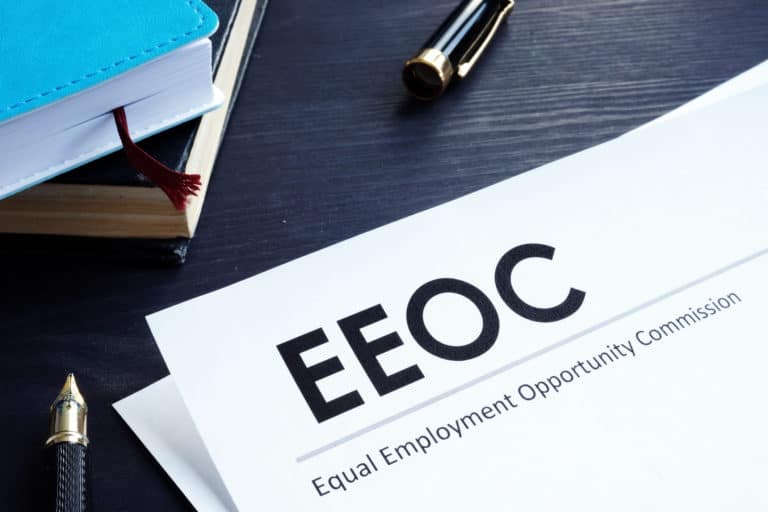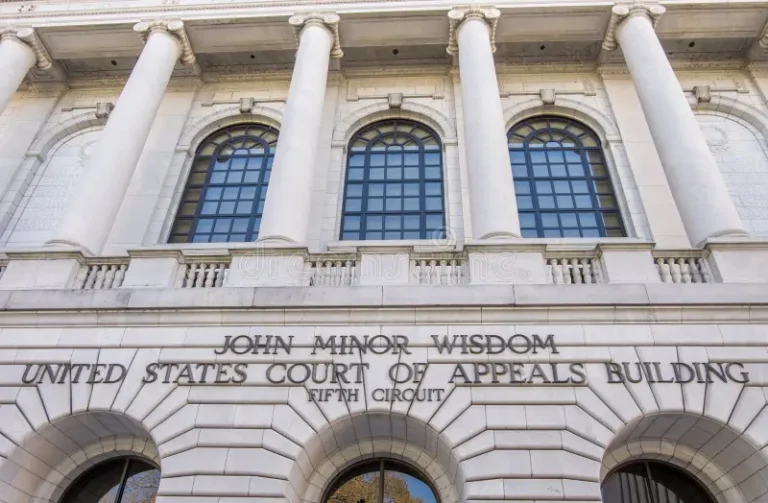Samuel Bagenstos is the Frank G. Millard Professor of Law at the University of Michigan Law School
Samuel Bagenstos is the Frank G. Millard Professor of Law at the University of Michigan Law School
For decades, skeptics of civil rights legislation have offered a perverse-effects argument. That argument starts from the well-founded premise that it is more difficult to enforce prohibitions on discrimination at the hiring stage than at the termination stage. Although disappointed applicants rarely know why they didn’t get a job, workers discharged after they have been on the job for a while typically find it easier to build a case. The worker often can point to past performance evaluations, or compare her outputs to those of her coworkers, to show that she was succeeding on the job. And the lore is that juries are inclined to give longtime employees the benefit of the doubt in discriminatory-discharge cases.
But if it’s hard to prove hiring discrimination, and easier to prove discrimination in firing, skeptics say, that gives employers an incentive not to hire women, members of minority groups, or other groups that might face (or perceive themselves as facing) on-the-job discrimination. Once individuals in these classes are hired, the logic goes, it will be difficult to fire them without undergoing burdensome proceedings under the antidiscrimination laws. But if an employer simply fails to hire them in the first place, it will not face much prospect of liability.
These skeptics have thus suggested that the entire edifice of employment discrimination law is misguided. In its place, they have proposed a variety of solutions, including: tradable quotas (think of a cap-and-trade system, but with workers from disadvantaged classes taking the place of carbon emissions); direct subsidies for hiring workers who might be subject to discrimination; and simply eliminating all prohibitions on hiring, firing, and pay discrimination, so that workers in disadvantaged classes can find employment by undercutting the competition, and employers will feel free to hire them knowing that they can be readily fired if things don’t work out.
When viewed in the context of this longstanding set of arguments, Professor Estreicher’s proposal is neither especially novel nor especially narrow. Under that proposal, employers would be permitted to hire on a probationary basis members of groups who face “chronic hiring aversion.” (Some might find this a rather clinical term for pervasive discrimination.) During a two- or three-year probationary period, Professor Estreicher says, the employer should have a “safe harbor” from liability for discriminatory discharge—in other words, the employer should be free to terminate the worker for any reason whatsoever, including a discriminatory one. He has three groups particularly in mind for this sort of probationary treatment: unemployed workers over age 50; workers with disabilities that require significant accommodations; and workers with serious criminal convictions.
Professor Estreicher presents his proposal as nothing more than a salutary tinkering of incentives. Hiring members of the groups who face “chronic hiring aversion,” he says, is likely to be less cost-effective than hiring others: Older workers may have trouble fitting into new job cultures, workers who require accommodations impose costs on their employers, and former felons may be likely to steal from their bosses. Some of these workers, he says, may “defy the predictions” and “perform as well as other employees”—but employers have a disincentive to take the risk. If firms hire members of these groups, and it doesn’t work out, the relatively strong restrictions on discriminatory discharge will make it very difficult to fire them. The probationary period, he argues, evens the scales: Employers will feel more free to hire these folks, because they can be easily fired if the experiment fails.
But Professor Estreicher’s proposal is much more than a simple tinkering with incentives. It would deny to certain groups the basic protections that are the centerpiece of our civil rights laws. It would subject members of these groups to discriminatory firing without any recourse. The result would be to make these workers second-class citizens in the workplace—to give employers enormous leverage to force them to accept harsh and demeaning working conditions.
We ought not adopt a policy that creates second-class workers without, at a minimum, strong reason to believe that the policy is necessary to provide employment opportunities to those workers. But there is no reason to think the “safe harbor” approach is in fact necessary.
For one thing, Professor Estreicher writes as if the weakness of the prohibition on hiring discrimination is an inherent feature of antidiscrimination laws. But it is not. There are numerous ways that hiring-stage enforcement could be enhanced, if we had the will to do so. If, for example, the EEOC were to use matched-pair testers and similar techniques to identify hiring discrimination—and if it were to give grants to NGOs to do the same work—that would go a long way to overcoming the evidentiary barriers that make it hard to pursue hiring claims. Loosening restrictions on class actions and disparate impact cases, too, would boost the effectiveness of the prohibition on hiring discrimination. Until we try techniques like these, it would be wrong to conclude that the only way to ensure that some groups can be employed is by denying them basic protections under our civil rights laws.
In this regard, it is especially notable that one of the groups Professor Estreicher singles out—workers with serious criminal convictions—is generally not protected by our antidiscrimination laws. Although the EEOC has taken the position that certain refusals to hire based on criminal records will violate Title VII’s disparate-impact prohibition, that position has not gained much traction in the courts. Some states and localities have adopted laws that prohibit some discrimination against people with criminal convictions as well. Absent nationwide coverage, there is no basis for saying that prohibitions on hiring discrimination based on criminal records will necessarily fail.
So it is far from clear that the “safe harbor” approach is the only way to provide employment opportunities to groups that face pervasive discrimination. Nor is that approach especially likely to provide opportunities to those groups. When Professor Estreicher explains why employers refuse to hire older workers, disabled workers, and workers with convictions, firing costs are very much a subordinate part of the story. Rather, he attributes employers’ actions principally to the higher costs workers in these groups will, on average, impose during their time on the job. To the extent that employers believe that these workers are more costly on average—and to the extent that job turnover is itself costly—they will have little incentive to hire members of these groups in the expectation that they can keep the workers who are exceptions to the rule and fire the rest.
Professor Estreicher himself tells us that employers are keen to avoid the costs of turnover: “Hiring a new employee always entails training and workforce-integration costs, which most employers will not want to incur unless they hope to recoup that investment over the course of sustained employment.” As a result, he says, there is no reason to fear that employers will abuse their “safe harbor” authority by churning through members of the targeted groups and firing each of them at the end of their probationary periods. If he is right on this point, then his proposal is not likely to provide much benefit to members of groups that face pervasive discrimination.
If he is wrong, though, the risk that his proposal will lead to a workplace caste system is particularly great. There is troubling empirical evidence that efforts to loosen up European job protections by allowing employers to fire at will during a probationary period have led employers to shift more jobs to temporary, probationary workers. If the same pattern holds in the US under Professor Estreicher’s proposal, the result may well be to increase the rate at which members of the affected groups are hired—but only by directing them into inherently short-term, insecure positions.
Let me return to where I started. There is no particular reason why the “safe harbor” proposal would be limited to the three narrow groups Professor Estreicher singles out as subject to “chronic hiring aversion.” His paper is just the latest in a long line of work making perverse-effects arguments about antidiscrimination law. That work rests on an argument about the disparity between hiring-stage and firing-stage enforcement that, in principle, applies perfectly generally. If employers refuse to hire women or minorities because of rational statistical discrimination—or simply because they fear that they will be unable to fire female or minority employees without spending significant resources defending antidiscrimination suits—why not solve the problem by giving employers a safe harbor? Professor Estreichers’s logic would seem to lead there, but he does not appear willing to go so far.
That, I submit, is because we all would recognize the harm of codifying a second-class workplace status for female and minority employees. If a policy wonk were to tell us that this second-class status would actually benefit female and minority workers, we would find the statement absurd. If we were convinced that the disparity between hiring-stage and discharge-stage enforcement was a real problem, we’d focus on improving enforcement of the civil rights laws at the time of hire. I suggest that we should have the same reaction to Professor Estreicher’s proposal.










Daily News & Commentary
Start your day with our roundup of the latest labor developments. See all
December 13
In today’s News & Commentary, the Senate cleared the way for the GOP to take control of the NLRB next year, and the NLRB classifies “Love is Blind” TV contestants as employees. The Senate halted President Biden’s renomination of National Labor Relations Board Chair Lauren McFerran on Wednesday. McFerran’s nomination failed 49-50, with independents Joe […]
December 11
In today’s News and Commentary, Biden’s NLRB pick heads to Senate vote, DOL settles a farmworker lawsuit, and a federal judge blocks Albertsons-Kroger merger. Democrats have moved to expedite re-confirmation proceedings for NLRB Chair Lauren McFerran, which would grant her another five years on the Board. If the Democrats succeed in finding 50 Senate votes […]
December 10
In today’s News and Commentary, advocacy groups lay out demands for Lori Chavez-DeRemer at DOL, a German union leader calls for ending the country’s debt brake, Teamsters give Amazon a deadline to agree to bargaining dates, and graduates of coding bootcamps face a labor market reshaped by the rise of AI. Worker advocacy groups have […]
December 9
Teamsters file charges against Costco; a sanitation contractor is fined child labor law violations, and workers give VW an ultimatum ahead of the latest negotiation attempts
December 8
Massachusetts rideshare drivers prepare to unionize; Starbucks and Nestlé supply chains use child labor, report says.
December 6
In today’s news and commentary, DOL attempts to abolish subminimum wage for workers with disabilities, AFGE reaches remote work agreement with SSA, and George Washington University resident doctors vote to strike. This week, the Department of Labor proposed a rule to abolish the Fair Labor Standards Act’s Section 14(c) program, which allows employers to pay […]